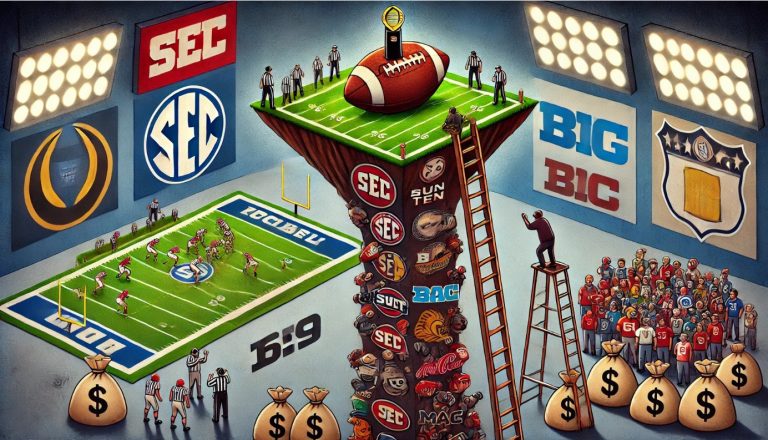
Posted on September 16, 2023
By Larry Billinger
As someone who grew up in the 80s, the concept of water bottles being a fashionable school accessory was virtually unheard of. Back in those days, we relied on good old water fountains and designated water breaks as a class. But as times have changed, so too have our habits when it comes to hydration. In this article, we’ll delve into the fascinating journey of how schools transitioned from traditional water fountain breaks to the water bottle craze that has gripped today’s students.
Transition From Fountain To Bottle
The transformation from traditional water fountain breaks to the water bottle craze in classrooms is a tale shrouded in mystery. While pinpointing the exact catalyst remains elusive, several factors likely contributed to this significant shift in how schools approached student hydration.
The “Hydrate or Die” Hypothesis: One theory suggests that the catchy slogan “Hydrate or Die” played a pivotal role. Spearheaded by Barbara Mizuno, this campaign became a cultural phenomenon, emphasizing the importance of proper hydration. While the exact date of this slogan’s rise to prominence is uncertain, its impact on school culture cannot be overstated. It may have been one of the seeds that prompted change.
The COVID-19 Influence: The outbreak of the COVID-19 pandemic forced schools to reconsider their approach to student health and safety. In a bid to minimize the risk of virus transmission, many schools made the difficult decision to turn off water fountains, effectively cutting off the traditional water source. As a result, students were encouraged to bring their water bottles to stay hydrated safely.
The Environmental Awareness Factor: Environmental consciousness has been on the rise in recent years. Schools, mirroring the broader push to reduce single-use plastics and promote sustainability, may have actively encouraged students to use reusable water bottles. This approach aligns with the global effort to reduce plastic waste and minimize our ecological footprint.
The Original Water Bottle
Nalgene ignited the water bottle craze, primarily in the 2000s, as reusable bottles became a status symbol with an $8 billion-plus industry value in 2008, while Nalgene stood out for affordability and sustainability, partnering with REVERB.org to prevent millions of single-use bottles from landfills.1
The Rise of Water Bottles as Fashion Statements
Enter the era of the water bottle as a fashion statement. With the “Hydrate or Die” message firmly embedded in our collective consciousness, water bottles became more than just vessels for holding liquids. They evolved into fashionable accessories, with students proudly displaying their preferred bottles. The hierarchy of cool water bottles emerged, with certain brands reigning supreme.
From Hydroflask to Stanley: The Changing Tide
For a while, Hydroflask was the undisputed king of water bottles. Its sleek design and reputation for keeping beverages cold or hot made it a student favorite. However, the winds of change have blown in, and Stanley bottles have surged in popularity. These rugged, reliable containers have carved out their niche as the go-to choice for hydration. The transition from Hydroflask to Stanley represents a shift in what students value in a water bottle – durability and functionality.
The Sticker or No Sticker Debate
One of the most noticeable shifts in the water bottle landscape is the sticker or no sticker debate. In the past, decorating your water bottle with a colorful array of stickers was considered fashionable. These stickers added a personal touch and helped distinguish your bottle from the sea of others. However, a new trend has emerged with the rise of Stanley bottles – the minimalist, stickerless look.
The Pros and Cons: Stickers vs. Stickerless
Let’s weigh the pros and cons of each side of this debate:
Stickers:
Personalization: Stickers allow students to express their unique personalities and interests.
Identification: Stickers make it easy to spot your bottle in a crowd.
Storytelling: Each sticker can represent a memory or experience.
Stickerless:
Clean Aesthetic: The absence of stickers provides a clean and minimalist look.
Easier Maintenance: Stickerless bottles are easier to clean.
Fits Any Style: Stickerless bottles suit a wider range of aesthetics.
The Ownership Dilemma: Protecting Your Investment
They’ve become valuable possessions with Stanley bottles retailing for around $45. But what if someone swipes your prized bottle? How will you identify it as yours? Some students resort to the age-old practice of writing their name on the bottom, ensuring that their bottle always finds its way back home.
In conclusion, the evolution of hydration in schools, from water fountain breaks to fashionable bottles, is a testament to how our lifestyles and preferences can change over time. Whether you’re a sticker enthusiast or prefer the stickerless, clean look, the most important thing is to stay hydrated. After all, as the “Hydrate or Die” campaign taught us, proper hydration is key to a healthy life, regardless of the vessel you choose to carry your water.
“Nalgene, the Original Cool Water Bottle Company: A 70-Year Journey.” Insider. June 24, 2019. Nalgene Is Celebrating 70 Years of Its Historic Water Bottle (insider.com) ↩︎


